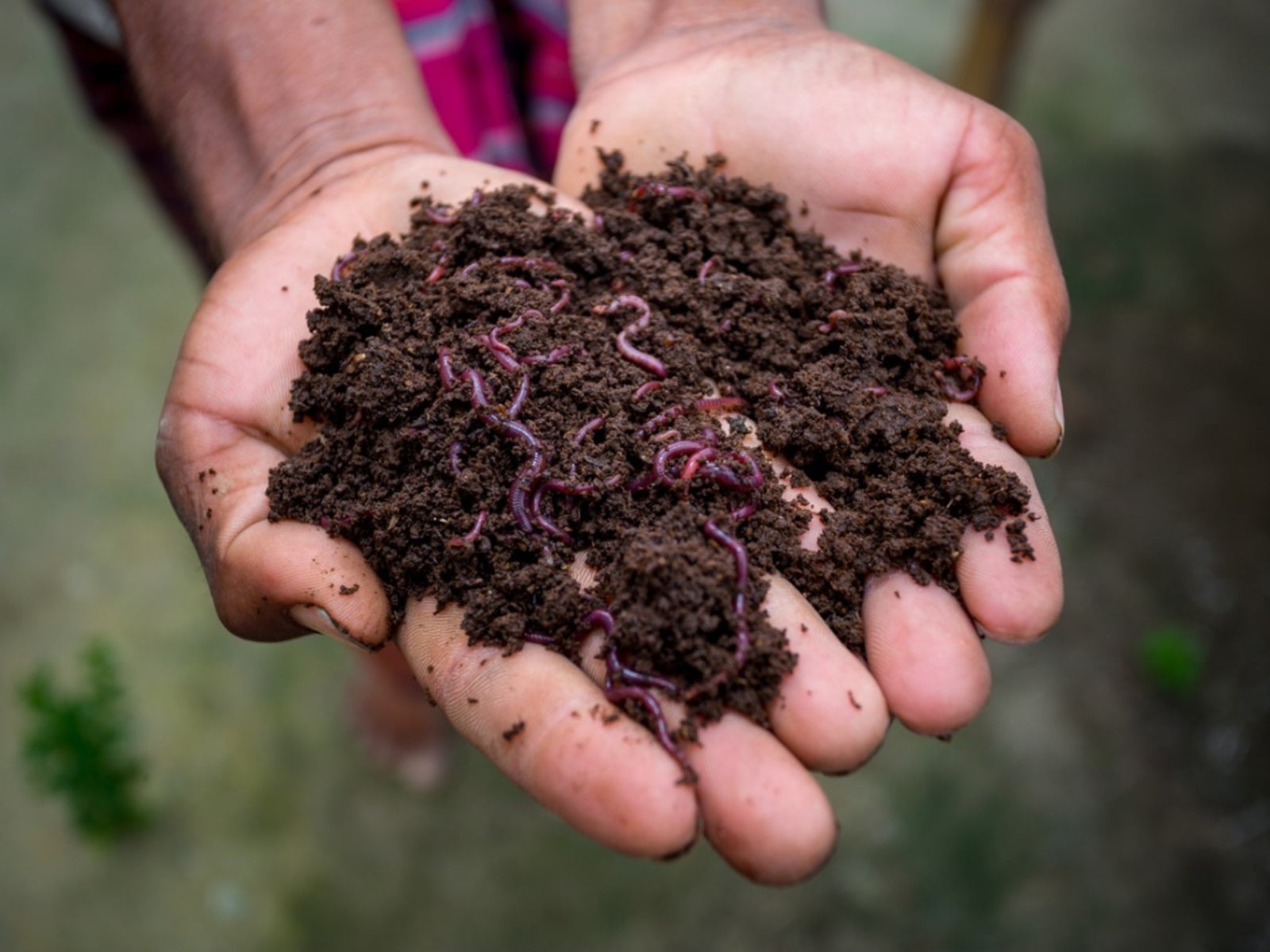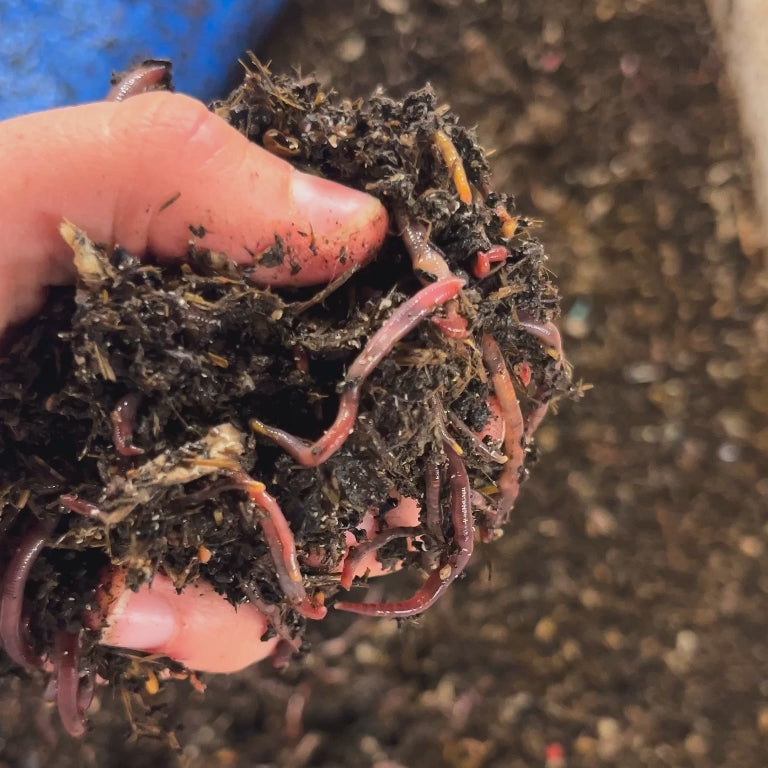Transform Your Waste with Red Wiggler Composting: A Full Newbie's Overview
Transform Your Waste with Red Wiggler Composting: A Full Newbie's Overview
Blog Article
Utilizing the Power of Red Wiggler Composting: An Extensive Check Out the Environmental and Agricultural Conveniences of This Natural Waste Reduction Technique
The method of red wiggler composting stands for an engaging junction of ecological stewardship and agricultural development, using a lasting solution to the growing challenges of waste monitoring and dirt destruction. Via the all-natural procedure of vermicomposting, natural waste is changed right into a beneficial source that not only enhances soil but also adds to a considerable decrease in land fill payments and greenhouse gas exhausts. As we discover the complex advantages of this technique, we discover exactly how it can reshape agricultural techniques and advertise eco-friendly understanding, motivating a closer examination of its potential influence on our communities and communities.
What Are Red Wiggler Worms?
Red wiggler worms, scientifically called Eisenia fetida, are a species of earthworm especially adjusted for composting and organic waste break down. These worms thrive in the nutrient-rich setting of decaying natural matter, making them perfect for vermicomposting systems. Growing to a length of about 3 to four inches, red wigglers are identified by their reddish-brown coloration and distinct banding patterns along their bodies.
Unlike various other earthworm types, red wigglers prefer to inhabit the upper layers of soil and organic particles, where oxygen levels are higher and food sources are bountiful. Their physical adaptations permit them to refine organic products effectively; they have a well-developed digestive system that allows them to convert waste into nutrient-rich spreadings, commonly referred to as "black gold" in horticulture and agricultural contexts.
Eisenia fetida plays an essential function in the environment by helping with the disintegration process, boosting soil framework, and promoting microbial activity. Offered their distinct characteristics and environmental importance, red wiggler worms have become a main part in sustainable waste monitoring practices and organic horticulture initiatives, contributing substantially to ecological health and wellness.
Advantages for Soil Health And Wellness
The addition of red wiggler worms in composting systems supplies substantial benefits for soil health. These worms play an essential function in the decay procedure, damaging down raw material right into nutrient-rich vermicompost. This all-natural plant food boosts dirt aeration, structure, and water retention, adding to a much more positive atmosphere for plant development.
Vermicompost is rich in necessary nutrients such as phosphorus, nitrogen, and potassium, which are crucial for plant advancement (Red Wiggler Composting). The existence of useful bacteria in vermicompost additionally advertises soil health by improving vitamins and mineral accessibility and reducing soil-borne microorganisms. This dynamic interaction fosters a robust soil ecosystem that sustains lasting agricultural practices
In addition, red wigglers assist in the formation of humus, a stable raw material that improves soil fertility and resilience. This raised organic content not just improves dirt structure but also boosts its capacity to withdraw carbon, mitigating environment modification impacts.
Integrating red wiggler composting into agricultural systems can, therefore, bring about much healthier soils, greater crop returns, and improved sustainability. Therefore, accepting this all-natural waste reduction method can generate profound advantages for both the setting and agricultural performance.
Influence On Waste Decrease
Including red wiggler worms into composting systems significantly lowers waste, transforming natural products that would certainly otherwise add to landfills into beneficial compost. This method, called vermicomposting, efficiently refines kitchen area scraps, lawn waste, and other eco-friendly materials, causing a significant decrease in the volume of waste sent out to landfills. According to the Epa, natural waste makes up a substantial section of landfill components, creating damaging greenhouse gases as it decomposes anaerobically.
By using red wigglers, a very reliable composting representative, services and families can draw away a significant quantity of organic waste from these garbage dumps. Each extra pound of red wigglers can refine and consume about half a pound of natural waste daily, causing a remarkable reduction in general waste generation.
Additionally, the application of vermicomposting assistances neighborhood waste monitoring initiatives and advertises a round economic situation, in which waste is changed right into a source. As communities increasingly adopt this method, the advancing result on waste decrease comes to be evident, fostering a much more lasting atmosphere and motivating accountable you can look here waste administration methods. Welcoming red wiggler composting not just minimizes waste issues but also enhances neighborhood awareness about sustainable living.
Enhancing Agricultural Practices
Making use of red wiggler worms in farming techniques can significantly enhance soil health and crop productivity. These worms play a vital duty in the composting procedure, damaging down raw material right into nutrient-rich vermicompost. This natural fertilizer boosts soil structure, water, and aeration retention, which are essential for robust plant development.
In addition, the spreadings produced by red wigglers are rich in necessary nutrients, such as phosphorus, potassium, and nitrogen, promoting much healthier plants with higher returns. The microbial activity promoted by these worms additionally contributes to a successful soil ecological community, boosting biodiversity and resilience against conditions and YOURURL.com insects.

Additionally, making use of vermicompost can enhance dirt pH degrees, making nutrients more obtainable to plants. Red Wiggler Composting. Consequently, farmers can cultivate much healthier plants while simultaneously contributing to dirt preservation initiatives, inevitably creating a more sustainable agricultural future
Getting Began With Composting
The main component in red wiggler composting is organic waste, which can include kitchen scraps, yard waste, and paper products. This equilibrium cultivates an optimum atmosphere for red wigglers, which are the crucial organisms in this composting method.
Selecting an appropriate composting system is just as essential. Worm containers can be made for outdoor or indoor usage, and they must supply sufficient drainage and oygenation. It is suggested to begin with a handful of worms-- roughly one pound of red wigglers for every single one extra pound of waste produced weekly.

Conclusion

The practice of red wiggler composting stands for an engaging intersection of ecological stewardship and farming development, offering a lasting service to the growing obstacles of waste administration and dirt deterioration.Moreover, the application of vermicomposting assistances regional waste management initiatives and promotes a round economy, in which waste is transformed right into a resource. As areas progressively adopt this method, the cumulative impact on waste reduction ends up being evident, promoting a more lasting environment and motivating liable waste administration techniques. The main active ingredient in red wiggler composting is organic waste, which can consist of kitchen scraps, lawn waste, and paper items.In summary, red wiggler composting provides a lasting service for natural waste management, yielding nutrient-rich vermicompost that significantly improves dirt health and wellness.
Report this page